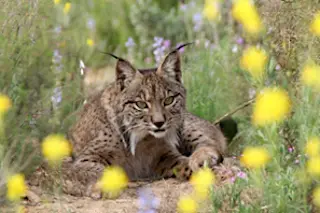On March 28, 2008, the northern Rocky Mountain gray wolf was taken off the federal endangered species list. The delisting has been attributed to conservation laws and efforts to reintroduce the wolf to the wild. In fact, with many of the world’s predators, from snow leopards and tigers to polar bears, dwindling—some species to the point of extinction—similar reintroduction efforts have been called these animals’ last, best hope. But now a disturbing new study reveals that such projects are rarely successful in the long run.
To evaluate the popular strategy, Kristen Jule of the University of Exeter in England analyzed efforts to reintroduce more than 2,000 captive animals belonging to 17 different carnivore species. Her analysis, spanning 45 separate research projects, included animals that were born in captivity as well those caught in the wild and relocated. Looking at the fate of each animal released, Jule and her colleagues found ...















